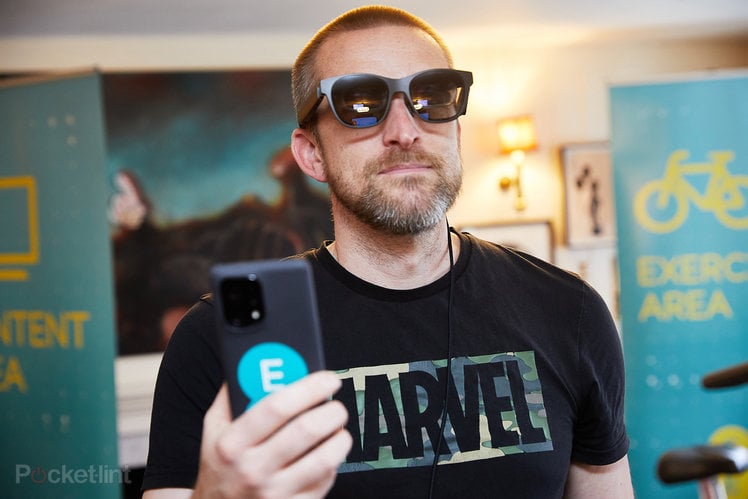
EE is bringing the Nreal Air to the UK as an exclusive retailer, meaning you’ll be able to step into virtual worlds using the new glasses and your phone.
We spent some time with the new AR glasses ahead of the UK launch.
Design and build
- Look like regular glasses
- Range of nose clips provided
- Also supports presciption lenses
The thing that will appeal most about the Nreal Air is that they look a lot like a regular pair of sunglasses. They weigh 79g, heavier that normal glasses, but not hugely weighty compared to something like the HTC Vive Flow headset, which is 189g.
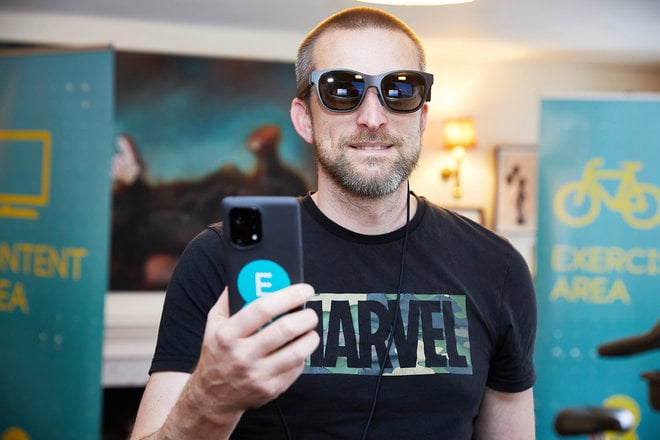
So these glasses wear pretty similarly to other sunglasses, with looks not too dissimilar to popular Ray-Bans when it comes to the design – and not too different to the Facebook-Ray-Ban mashup.
The top of the glasses is thicker because it’s here that the technology is housed, with two 3840 x 1080 pixel OLED displays projecting images down onto the internal lenses. You’ll be able to adjust the angle of the internal lenses to get sharper images, although we didn’t get the chance to examine this option during our tests.
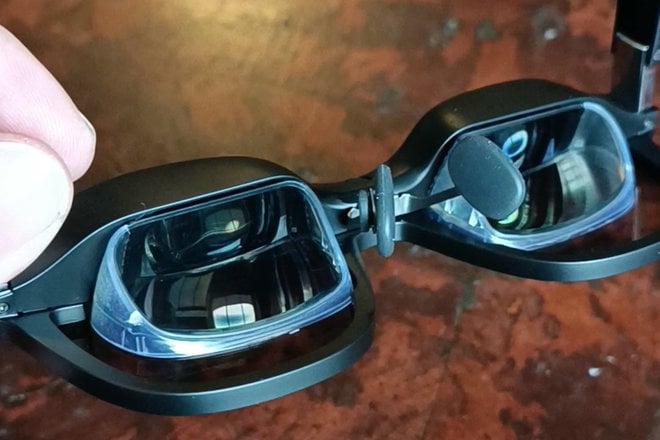
There’s also a range of nose pads, so you can change these to get the perfect fit and make sure they sit naturally and comfortably on your head. We found them surprisingly comfortable and with the right nose clip, they sit on the face quite well balanced, so they don’t feel like they’re doing to fall off.
A case is supplied to keep everything in – and that will include the cable, because this isn’t a wireless solution – it needs to be connected to your phone.
Getting setup
- Nebula smartphone app
- USB-C cable connection
On the end of the left-hand arm of the Nreal Air is a USB-C connection, so you can attach the supplied cable and plug it into your phone. We tested the Nreal Air with Android devices – and although the glasses will work with iOS, we currently don’t have any details about that support.
Once connected to your phone, you’ll have to power on the glasses, with button controls on the right-hand arm. There’s both a power button and a brightness rocker, with up to 400 nits of brightness offered. The glasses offer 5 hours of video playback.

There are also speakers built into the arms to provide audio, but this is controlled by the volume on your source device. You could also use headphones connected to your phone is preferred, although we didn’t test this option.
Once you’re all setup with the glasses in place and connected, all that remains is to fire up Nreal’s Nebula app.
This provides the interface you’ll use on the AR glasses, taking content from your phone and putting into the virtual world. After a short interface demo, you’ll good to go.
Exploring the Nebula
- MR Space and Air Casting modes
- Can change position and size of windows
- Phone acts as controller
Once in the app, there’s a simple interface, which is really divided into two different modes. The first is MR Space – mixed reality space – which lets you open a range of apps or services in virtual windows.
MR Space
This is where most of the advanced mixed reality experience is going to take place, as it’s here that you can pick from experiences designed specifically for Nreal Air. Much of this is currently browser based, allowing you to open numerous browser windows and place those within your visual area.
The Nreal Air can track head movements, so you can, for example, open a main window (like a video service) and be watching something, while opening a secondary or tertiary window for other information – perhaps a comments stream or social media.
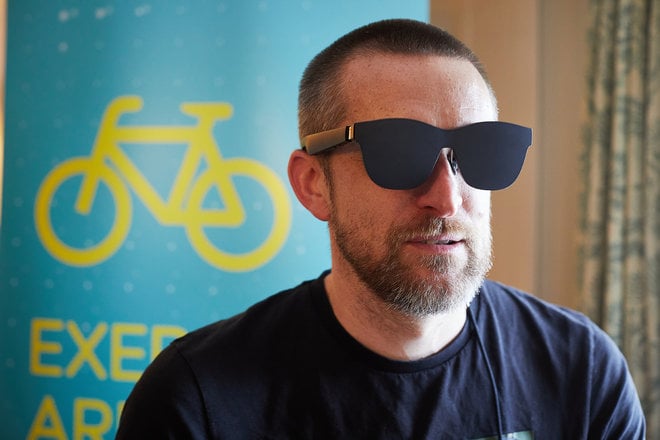
The Nreal Air makes it easy to resize and position windows, moving them in a virtual space, so you’re free to essentially place them where you want – that might be all visible at the same time, or perhaps with one screen needing you to turn your head to the left to be able to see it (for example). It’s the classic sci-fi movie moment where you have all the information in floating windows around you.
When in MR Space mode you’ll control things using your phone, which acts as a pointer as you move it around, lets you click, tap, press and hold, swipe and so on to interact with content and the environment.
Air Casting
The Air Casting option opens a range of other experiences from apps you might already have on your phone. While it’s not quite as tailored as the MR Spaces experience, it’s likely to be popular, as this is where you can open up anything on your phone and view it in a huge virtual display instead.
This is where the 130-inch virtual screen size comes into play. The screen will look as though it’s about 4 metres away, but it’s huge, filling your field of vision for a really immersive environment. We tested this with Xbox Cloud Gaming, putting in a little time on Forza Horizon 4, thanks to a connected Xbox controller.
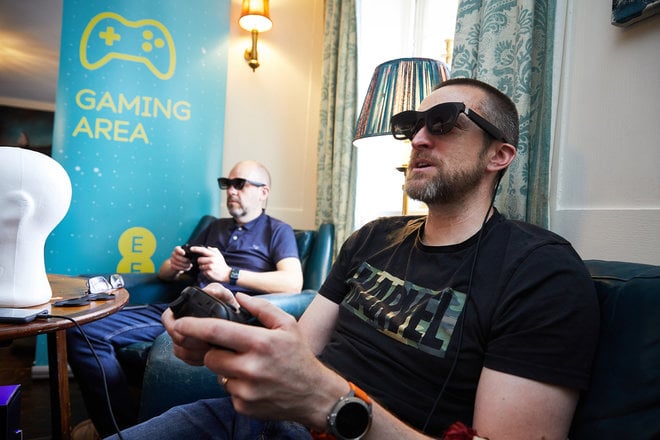
It’s also in the Air Casting mode that you’d be able to open up something like Netflix for more of a cinema experience, rather than watching it on your phone’s display. If you’re worried about the quality considering that you can still see the real world behind it, there is a cover, which you can place over the glasses to effectively black them out.
The downside of Air Casting is that you phone needs to stay on all the time, as it’s basically just mirroring what happens on your phone in a huge virtual screen.
Unlike a VR headset that seals to your face, there’s still a sense of the outside world that comes in from the bottom of the glasses. Despite that, when playing face-paced Forza, we did get that slight sense of inertia from seeing motion but not feeling it. We’ll need to spend more time with the Nreal Air to see how much of an issue this might be.
What you don’t get
As we mentioned previously, there are no cameras on the Nreal Air, so there’s no augmenting of reality – the glasses can’t incorporate objects or scenes around you, because it doesn’t know what you’re looking at.
That also means that the glasses can’t detect hand movements for any sort of gesture control. This is more about a content consumption experience and giving you a way to experience things on a bigger screen rather than on the screen of the phone – with any size limitations that that might bring.
There’s also no need for internal storage as you might find on the Meta Quest 2, as this is really just a display device. In that sense, it’s closer to the HTC Vive Flow headset in terms of what it offers.
